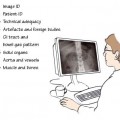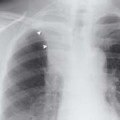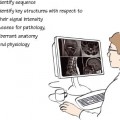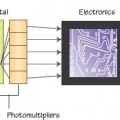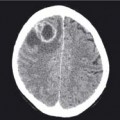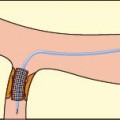27.2 Approach to fluoroscopy interpretation
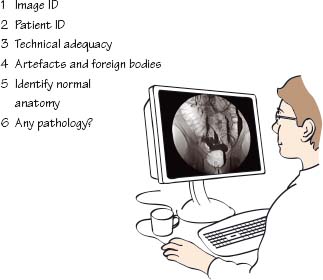
Fluoroscopy referral checklist (see Chapter 7)
The imaging referral form is a legal document. The referrer has a legal responsibility to ensure that the correct and complete information is provided to the Imaging Department so that the patient is appropriately investigated and managed.
- Patient identification: The referrer must ensure that the Imaging Department receives the correct identification details of the patient to be investigated: full name, date of birth and hospital identification number are the essentials.
- Clinical status: The referrer must ensure that the patient’s clinical condition and urgency with which the investigation is required are conveyed to the Imaging Department. Fluoroscopic investigations can take a long time and require the patient to be alert and co-operative. The referrer should discuss with the patient whether or not they are able and willing to undergo the investigation being requested, which can often be embarrassing for the patient (e.g. increased passing of flatus or incontinence with double con trast enema). If the patient is distracted by pain or other symptoms then an alternative investigation may be required. For many gastrointestinal fluoroscopic studies, bowel preparation in the form of starvation diet and/or laxatives are required in the days preceding the study to clear the alimentary canal of food products and faeculent material (Imaging Departments usually have individualised protocols).
- Patient’s mobility: This is particularly relevant for fluoroscopic contrast studies where the patient may be required to be mobile (e.g. stand, roll over) in order to obtain the relevant images. If the patient is not able to undertake the necessary manoeuvres then an alternative investigation may be appropriate, e.g. CT colonography rather than barium enema. If there is doubt, the referrer should consult the radiologist.
- Patient’s location and travel details: The patient’s mobility also extends to their mode of transport to the Imaging Department. This includes the need for a clinical escort with patients requiring monitoring and therapeutic adjuncts such as supplementary oxygen or intravenous infusions. The points of departure and return and contact details must also be notified to the Imaging Department to ensure the patient is transferred safely and efficiently.
- Indications:

Stay updated, free articles. Join our Telegram channel

Full access? Get Clinical Tree


